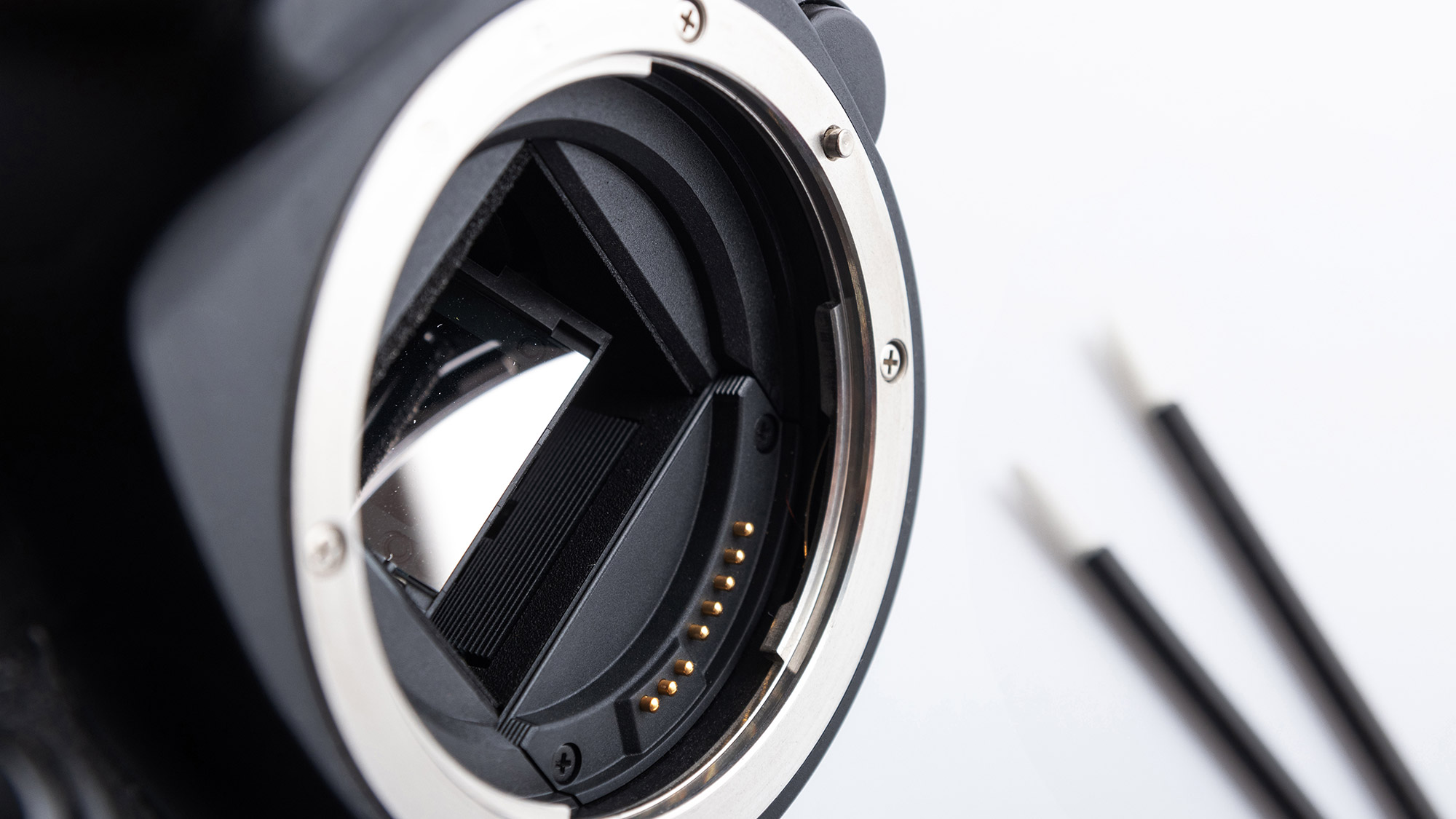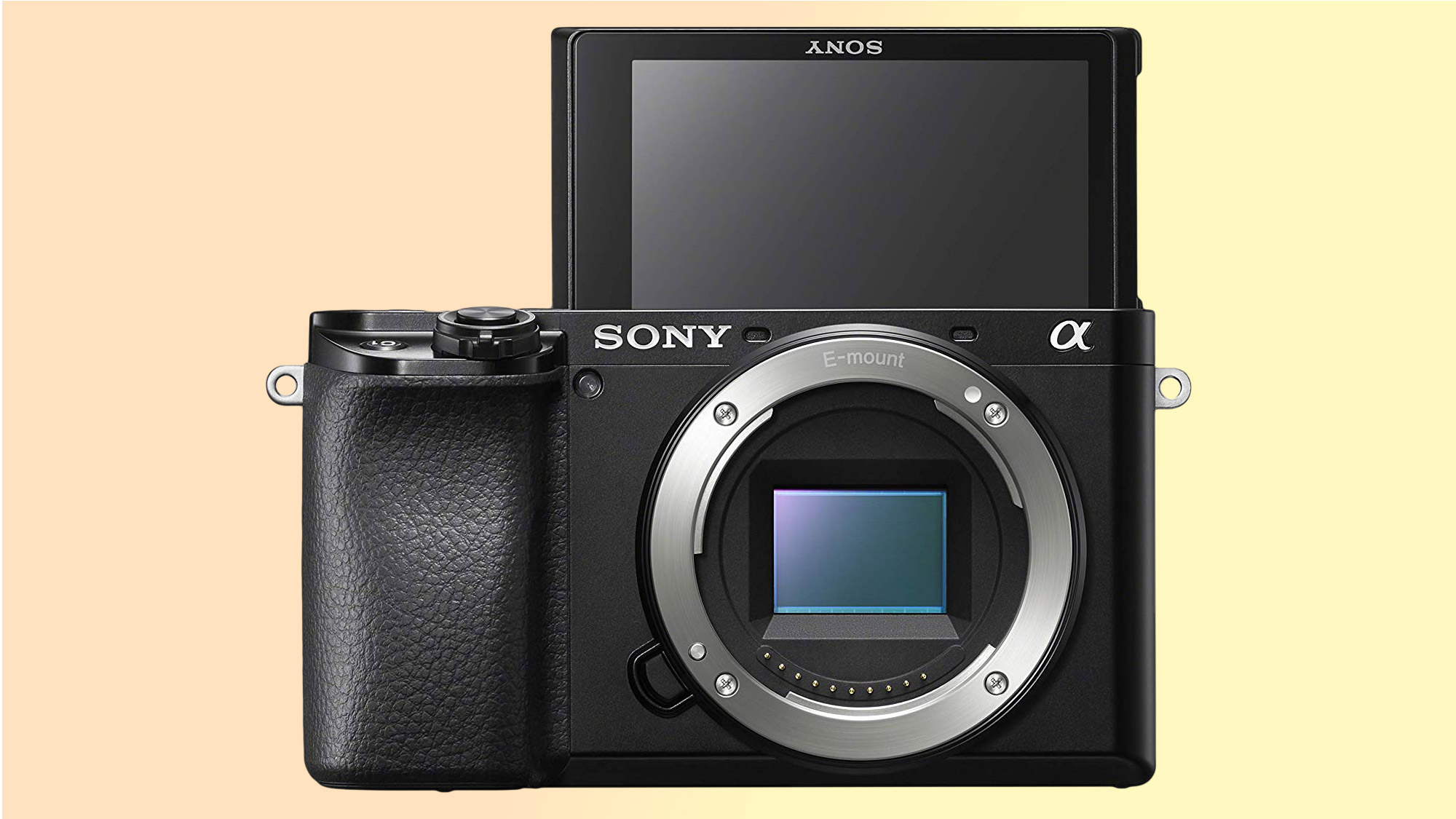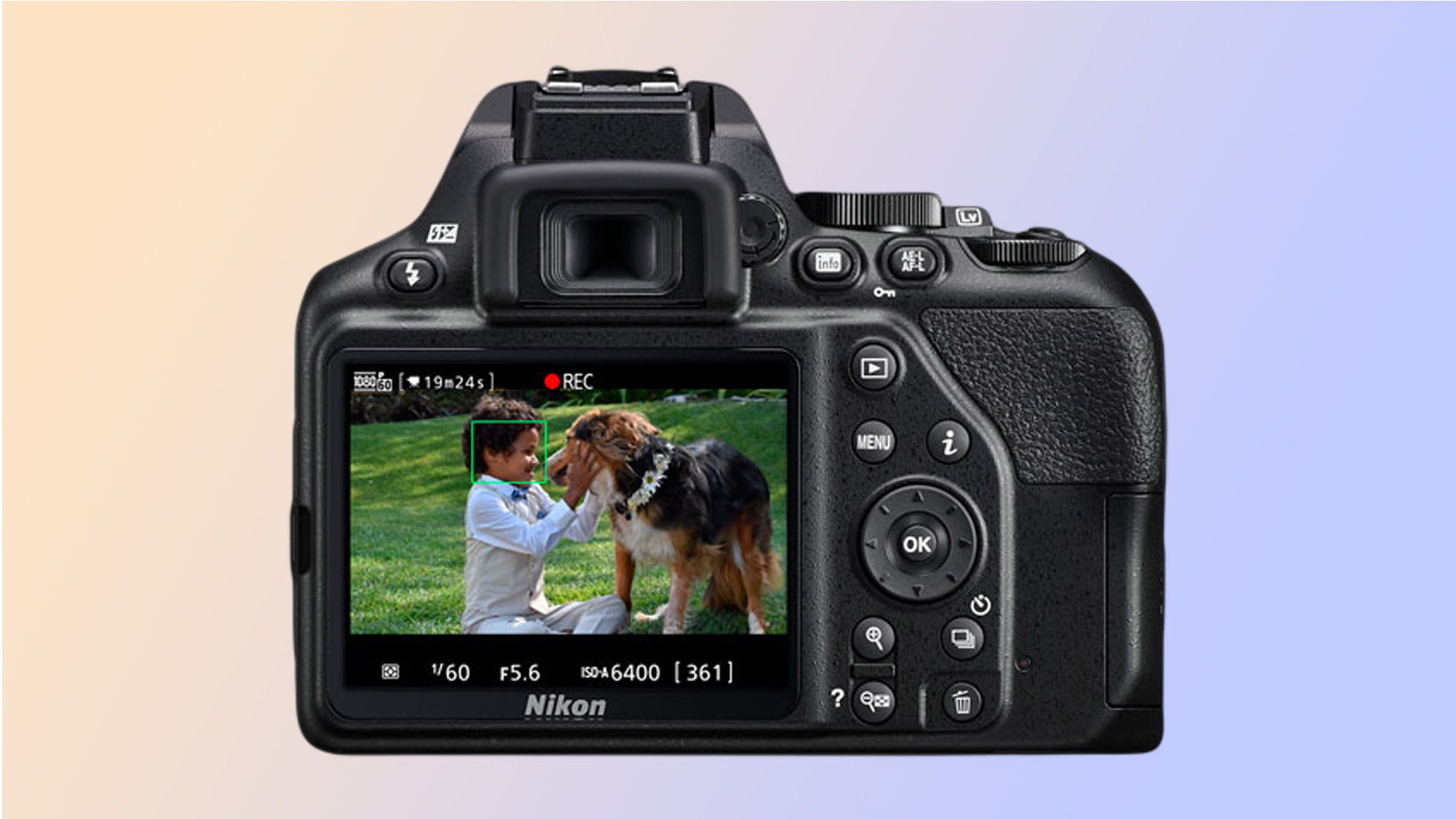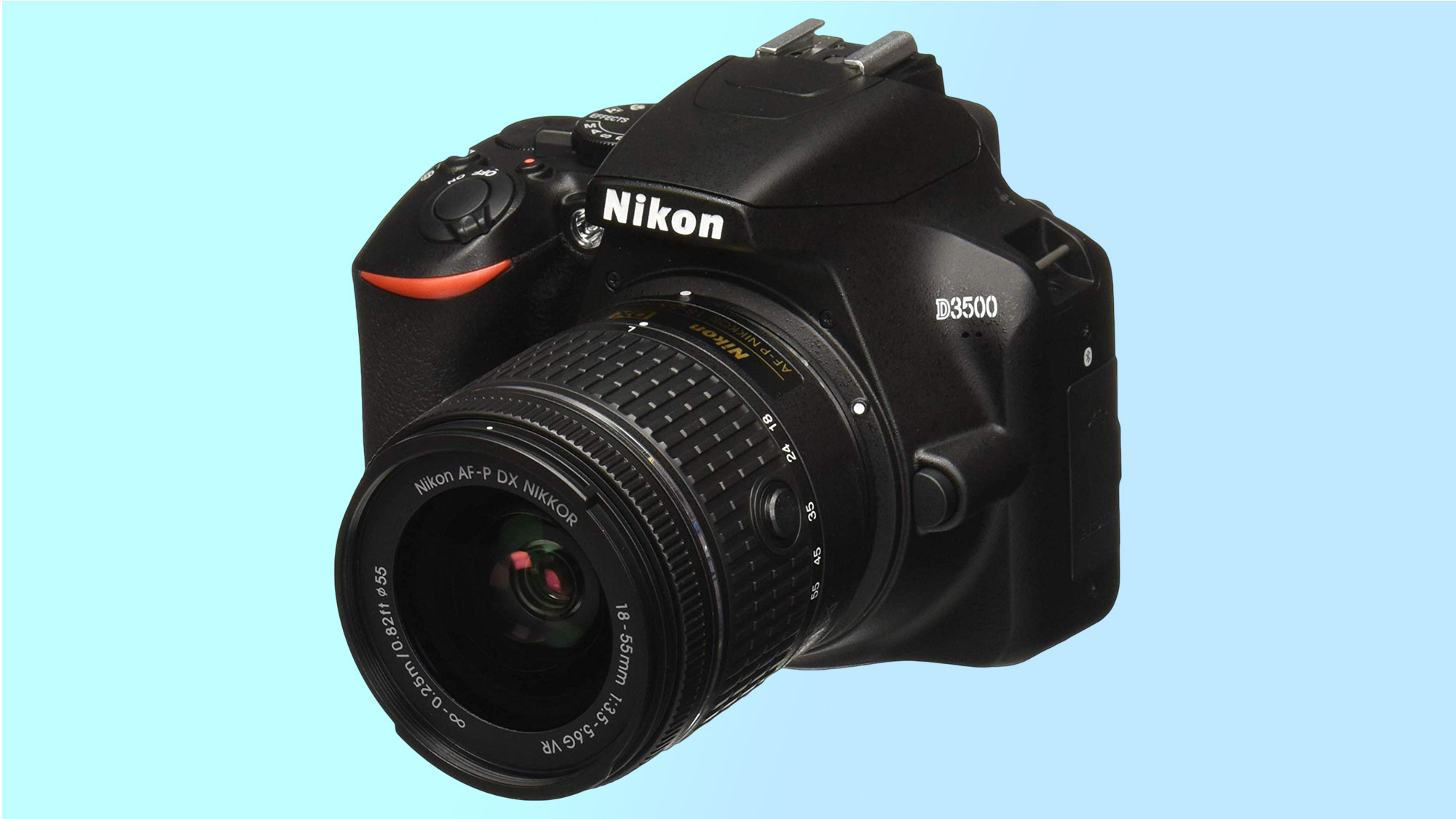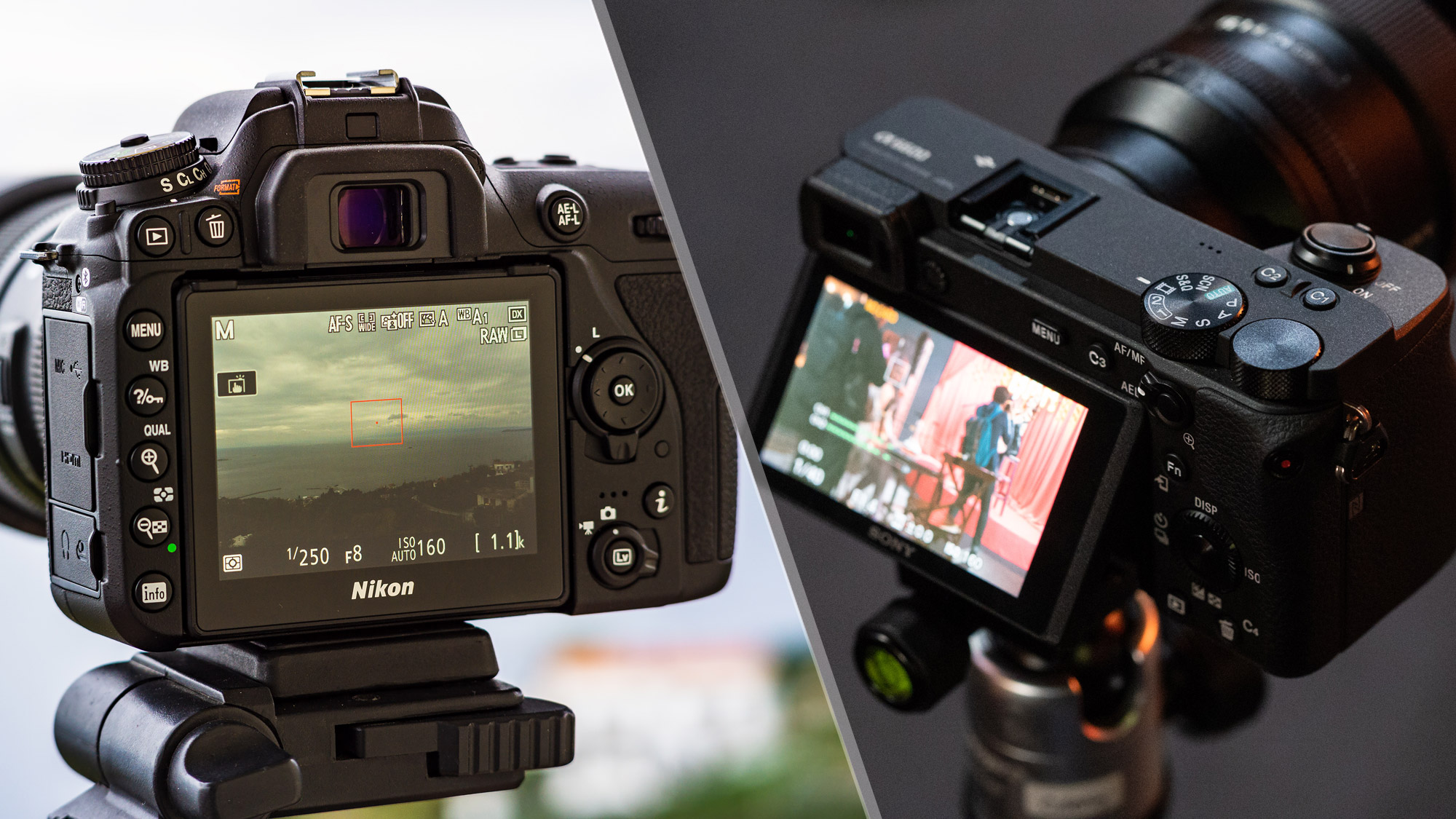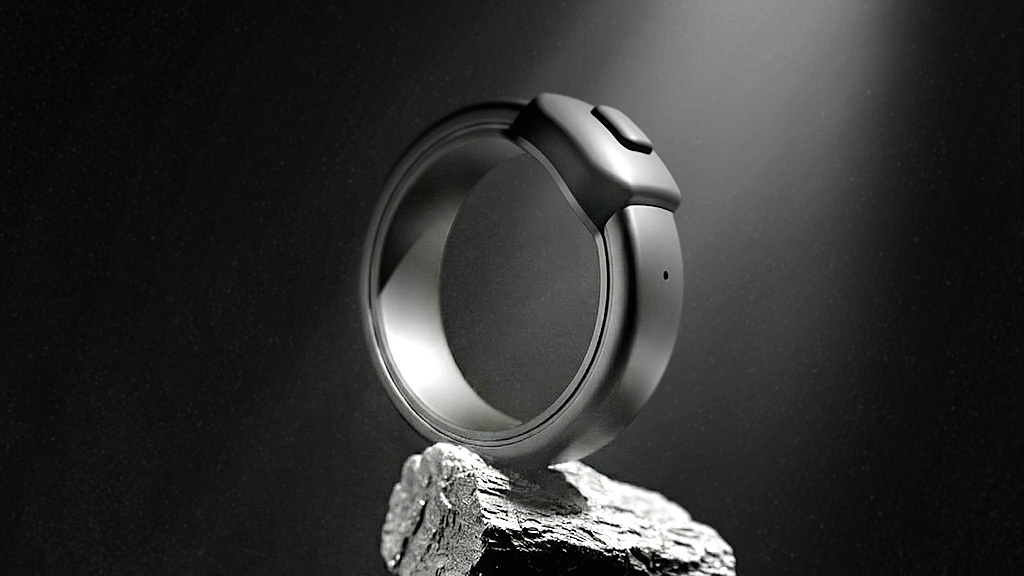DSLR vs. mirrorless cameras: Which is better for you?
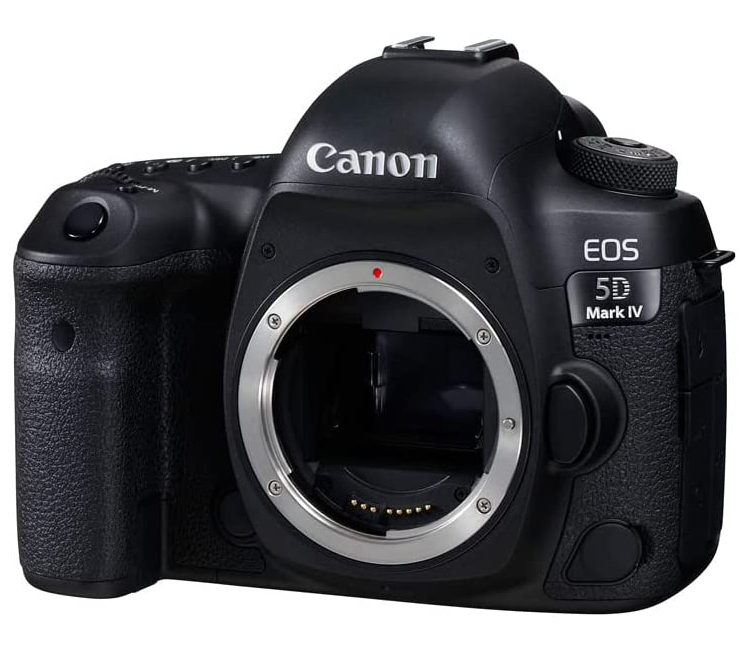
DSLR cameras are now a dying breed, with most manufacturers having switched focus to mirrorless technology. DSLR cameras still offer some advantages, though: they often incredibly cheap at the lower end, with better battery life in general, and come with decades of previously released lenses to choose from.
Pros
- Better battery life
- Decades-worth of lenses
- Cheaper at low-end
- Many prefer OVF
Cons
- Limited new releases
- Bulky and heavy
- 5-axis IBIS rare

Mirrorless cameras tend to have shorter battery life thanks to the EVF/screen combo, and won't please OVF purists. However, they usually more compact, better at video and, with manufacturers prioritizing them, now have many more lenses available for them. They're probably the best bet for most people.
Pros
- Often lighter and compact
- Better for video
- Faster shooting speed
- 5-axis IBIS common
Cons
- Poorer battery life
- One decade of lenses
- Many prefer OVFs
If you’re in the market for a new camera, the DSLR vs mirrorless debate is probably something you’re already familiar with. Indeed, if you’ve not made your mind up already, you’ll have to decide between one or the other beforehand.
There are many similarities and differences between the two types of interchangeable lens camera. Both allow you to swap lenses, making them more versatile than point-and-shoot, bridge or instant cameras, which have fixed lenses. This makes either a great starting point for new photographers looking to learn and grow, but also makes both options pricier than fixed lens systems.
Initially, mirrorless cameras were looked down on by many industry heavyweights (manufacturers included) and traditional DSLR photographers. And there are still many die-hard fans on each side of the debate. Now, though, most manufacturers have embraced the mirrorless format, with many focusing on it over traditional DSLR. The use of mirrorless has also become more widespread among photographers themselves, especially with the increase of amateur videography for online content creation.
The decision really comes down to your needs, as DSLRs still offer some advantage over mirrorless cameras, and vice versa. Bear in mind, however, that very few new DSLRs are being produced these days, so mirrorless may be your only option long term. This could inform your starting choice, as investing in a lens mount for which no new cameras are being produced may give you less choice in the future.
So, which camera format is best for you? Simply read on to find out.
DSLR vs. mirrorless: Price
When it comes to camera pricing in general, DSLRs and mirrorless cameras are roughly analogous, with beginner models starting at around $500, and high-end professional rigs costing upwards of $2,000. However, now that DSLR technology is being unprioritized, the cost of those cameras is falling and you can now pick up an entry-level DSLR like the Canon Rebel T100 / EOS 4000D for just over $300 / £300. Add in that the lenses for these cameras, especially second hand, are older and cheaper, and DSLRs can provide a hefty cost saving versus mirrorless systems. For that reason, they're taking the win here.
Cameras aimed at beginner and intermediate shooters will generally come with a "kit" lens — one that's pretty good for most purposes. Cameras aimed at pros will be sold "body only," i.e., without a lens, so you'll have to factor that into your budget, too. And lenses can cost a lot.
Get instant access to breaking news, the hottest reviews, great deals and helpful tips.
It's also worth noting that you'll often find the best deals on cameras a year or two old, as companies look to clear out stock for newer models. Don't be concerned by the fact that they're not the latest model — things don't move that quickly in the camera world, and these cameras will still be generally very good in most areas. They're definitely worth considering, especially if you're new to the market.
Winner: DSLR
DSLR vs. mirrorless: Key differences
For the most part, DSLRs use the same design as the 35mm film cameras of days gone by, with an image sensor occupying the place where film would have resided.
A mirror inside the camera body reflects light coming in through the lens up to a prism (or additional mirrors) and into the viewfinder so you can preview your shot. When you press the shutter button, the mirror flips up, the shutter opens and the light hits the image sensor, which captures the final image.
Our top DSLR pick for beginners is the budget-friendly Canon EOS Rebel SL3 / 250D, which costs around $550 depending on the lens that comes with the kit.
In a mirrorless camera, light passes through the lens and right onto the image sensor, which captures a preview of the image to display on the rear screen — just as a smartphone camera does.
Some models also offer a second screen via an electronic viewfinder (EVF) that you can hold up to your eye for a better view when you're in bright sunlight. Our example of a mirrorless camera, one of our favorites, is the Fujifilm X-E4 (around $850 in body-only form).
DSLR vs. mirrorless: Size & weight
DSLR camera bodies are comparatively larger, as they need to fit in a mirror and optical viewfinder mechanism. The body of the Nikon D5600, for example, is a rather bulky 2.8 inches deep before you put the lens on the front. With the 18-55mm kit lens, the camera weighs about 1.4 pounds.
A mirrorless camera body can be smaller than a DSLR, with simpler construction. The Sony a6100, for instance, has a body just 1.6 inches thick and weighs 1.3 pounds with its 16-50mm kit lens. That's compact enough to fit in a coat pocket or a small purse.
It should be noted, though, that some of the newer mirrorless cameras — especially those that have full-frame sensors — are nearly as large and heavy as some DSLR cameras, so the savings in size and weight is negligible.
Winner: Mirrorless camera
You can carry a mirrorless camera more easily and fit more gear, such as extra lenses, into a camera bag.
DSLR vs. mirrorless: Autofocus speed
DSLRs used to have the advantage here, because they use a technology called phase detection, which quickly measures the convergence of two beams of light. Mirrorless cameras were restricted to a technology called contrast detection, which uses the image sensor to detect the highest contrast, which coincides with focus. Contrast detection is slower — especially in low light — than phase detection.
Those distinctions are essentially over now. Nearly all mirrorless cameras (as well as the best camera phones) now have both phase- and contrast-detection sensors built into the image sensor. The Sony a6100, for instance, has 425 phase-detection autofocus points on its image sensor, along with 425 contrast-detection points. The Nikon D3500 has 11 large phase-detection sensors in its separate AF sensor and uses the entire image sensor for contrast detection. Newer Canon DSLRs (and the high-end Nikon D780) place phase-detection sensors right on the main image chip, along with the contrast-detection sensors, allowing them to function like a mirrorless camera with a live on-screen preview and fast autofocus.
DSLRs can mimic a mirrorless camera by raising the mirror and showing a live preview of the image (usually called Live View mode). Most low-cost DSLRs are slow to focus in this mode, though, as they don’t have the hybrid on-chip phase-detection sensors and have to use slower contrast detection to focus.
Winner: Draw
Both types offer speedy autofocus using ever more similar technologies. If you are shooting video with a DSLR, be sure to find a model that has on-chip phase-detection sensors.
DSLR vs. mirrorless: Previewing images
With a DSLR, the through-the-lens optical viewfinder shows you exactly what the camera will capture. With a mirrorless camera, you get a digital preview of the image on-screen. Some mirrorless cameras offer an electronic viewfinder (EVF) — a small, high-resolution screen in an eyepiece that simulates the optical viewfinder of a DSLR.
When you're in good light, the preview on the screen or EVF of a mirrorless camera will look close to the final image. But in situations where the camera is struggling (such as in low light or with fast-moving subjects), the preview will suffer, becoming dull, grainy and jerky. That’s because the mirrorless camera has to slow down the speed at which it captures images to grab more light, but still has to show you a moving preview. A DSLR, by contrast, reflects the light directly to your eye.
However, one benefit to EVFs on mirrorless cameras is that they can give you a preview of what the final image will look like before you actually take the picture. If you change the shutter speed or the aperture, for instance, what you see on the EVF will change accordingly. Meanwhile, since a DSLR's optical viewfinder reflects light without altering the image, you are more reliant on the camera's metering and your experience when it comes to predicting what your final results will look like.
So, if you are shooting mostly in good light, both types will perform well. If you are often shooting in low light or other challenging conditions, though, a DSLR will be easier to shoot with.
Winner: Draw
For many situations, both types of cameras provide you with very capable image previews.
DSLR vs. mirrorless: Image stabilization
Shaky hands make for blurry pictures, and the effects are magnified the longer your shutter speed, or the more you zoom in. Both DSLR and mirrorless cameras offer image-stabilization systems: sensors measure camera movement, and the camera slightly shifts either part of the lens or the image sensor in a direction that's opposite to the shake.
DSLRs and most mirrorless cameras are limited to the lens-shift method, which allows them to counteract shake along two axes: vertical (straight up or down) and horizontal (side to side). Some mirrorless cameras move both the lens element and the sensor along two axes in a synchronized pattern for even greater stability.
We have found that the differences between these approaches are minimal. The main advantage of sensor stabilization is that it works with all lenses, even older or cheaper lenses that don't provide their own stabilization. Either way, most modern cameras can deal with a small amount of camera shake to produce a sharper picture, but can't compensate for larger movements.
However, there are a few exceptions. Higher-end mirrorless cameras such as the Olympus OM-D EM-5 Mark III, the Sony a6500 and Sony a6600 offer in-body five-axis image stabilization, which is a feature not yet found on most DSLRs — though the Pentax K1 series, does have it, as does last year's Pentax K-3 III. They shift the sensor to compensate for movement not only on the vertical and horizontal axes but also along three other axes: pitch (tilting up and down), yaw (turning side to side) and roll (rotating).
In-body five-axis stabilization is superior to other methods and extremely helpful when shooting from a moving position, such as a car, helicopter or boat. It also produces much steadier footage for handheld video shoots.
Winner: Mirrorless
Five-axis image stabilization gives mirrorless cameras the edge over most DSLRs — in the more expensive models that have it. But in entry-level cameras, both mirrorless and DSLRs tend to use similar in-lens stabilization.
DSLR vs. mirrorless: Image quality
Both types of camera can take high-quality pictures, with similar resolutions and amounts of graininess, known as noise. Mirrorless cameras traditionally had smaller image sensors, which used to mean lower quality (as they couldn't capture as much light), but that is no longer the case. Camera manufacturers have learned to produce more sensitive chips and to better suppress noise from small sensors.
Furthermore, several mirrorless camera makers now use larger image sensors. Sony and Canon, for instance, make mirrorless cameras with the same APS-C size sensors found in the majority of DSLRs.
There are also a number of full-frame mirrorless cameras that have the same size sensor (35mm) that's found in premium DSLR cameras. Sony's A7 line pioneered this, but now Canon and Nikon also have full-frame mirrorless models. Fujifilm even makes several mirrorless cameras, the GFX series, that have a bigger-than-full-frame Medium Format sensors — but these start at a pricey $3,500 and aren't aimed at beginners.
Winner: Draw
With equivalent sensors and image processors, both camera types can take great photos.
DSLR vs. mirrorless: Video quality
Autofocus is the key differentiator for video. Typically, mirrorless cameras have had the advantage, since they were more likely to have on-chip phase-detection focus sensors. Most DSLRs still can't use phase detection with the mirror up while recording video, so they have to use the slower, less accurate, contrast-detection focus method. This leads more often to the familiar blurry look in the middle of a video, when the camera starts hunting for the right focus. However, Canon began changing the dynamic a few years ago by adding on-sensor phase detection, starting with the Canon 80D and the Canon EOS Rebel T7i. Nikon is now also including on-sensor phase detection in its higher end of cameras.
Both camera types have also been making the move to 4K, or Ultra HD, video with four times the resolution of HD footage. Sony, for instance, now has 4K in its base mirrorless model, the a6100, and Canon has equipped its beginner-oriented Rebel T8i with 4K capture.
Winner: Mirrorless
With superior autofocus in more models, mirrorless cameras provide the best results for most filmmakers.
DSLR vs. mirrorless: Shooting speed
Both camera technologies can shoot at very fast shutter speeds and capture a burst of images quickly. With the exception of high-end DSLRs, mirrorless cameras have an edge, though: the lack of a mirror makes it easier to take image after image. Although they don’t have mirrors, most mirrorless cameras still use a mechanical shutter that lifts to expose the image, as it produces better results. They also have the option of using an electronic shutter (just setting how long the sensor reads the light), which means they can shoot more quickly and silently.
Winner: Mirrorless
The simpler mechanics of mirrorless cameras allow them to shoot more photos per second.
DSLR vs. mirrorless: Battery life
Generally, DSLRs offer longer battery life, as they can shoot without having to provide live view on an LCD screen or an electronic viewfinder, both of which consume a lot of power.
That said, mirrorless camera battery life is improving. For instance, the Sony a6000, which debuted in 2014, is rated for 360 shots per charge (when using the LCD preview). Its successor, the a6100, is rated for 420 shots from the same battery.
But they still can't touch DSLRs. The entry-level Nikon D3500, for instance, is rated for a whopping 1,550 shots per charge. If you opt for a mirrorless camera, you might want to consider also buying a second battery.
Winner: DSLR
DSLRs offer the ability to shoot without using the LCD screen or EVF, which can extend the battery life considerably.
DSLR vs. mirrorless: Lenses & accessories
Choosing a DSLR gives you access to a plethora of lenses from a number of manufacturers, ranging from cheap and satisfactory to professional and wildly expensive. Mirrorless models are slightly more restricted, offering access to a small number of lenses from the camera maker, though the selection has grown massively in recent years. Put simply, if you choose a mirrorless system, you probably won't ever lack lenses to choose from, and should be able to find lenses from ultra-wide up to super-telephoto. It's just that you'll have more choices on DSLR systems thanks to decades of lens releases.
As they have been around longer, DSLRs tend to have a better selection of other accessories, such as speedlights (flashes).
The difference is more noticeable among traditional camera makers, but the gap is closing and, these days, choosing a mirrorless mount doesn't mean you'll need to accept gaps in focal range.
Canon and Nikon have hundred of lenses for their DSLR systems, by virtue of how long those systems have been around. Nikon's mirrorless Z-mount only has 31 lenses, while Canon's mirrorless RF, RF-S and EF-M mounts add up to 39 lenses. But while this may seem like a huge delta, in reality it isn't problematic for users of those systems. Both manufacturers offer mount adapters for using DSLR lenses on their mirrorless systems, allowing you to use older lenses on your new mirrorless camera (albeit potentially sacrificing some characteristics of the lens, including autofocus speeds). Meanwhile, there are also third party lens manufacturers like Sigma and Tamron, making autofocus lenses to rival the quality and focusing speeds of first party lenses, often for less money.
The mirrorless lens selection is even better for companies that have been focussing on the technology since the rise of enthusiast and professional mirrorless cameras began in the early 2010s. Sony, for instance, now has 66 E-mount lenses for its mirrorless models at the time of writing. Olympus and Panasonic, which share the Micro Four Thirds sensor format, each make a wide range of lenses (Olympus making 30 and Panasonic 37), while Fujifilm makes 50 lenses for its X- and G-mount mirrorless cameras. Again, third-party lens makers also produce a wide range of autofocus lenses for these cameras.
In addition, you can generally purchase adapters to use DSLR-size lenses on a mirrorless camera that's made by the same manufacturer (such as for Canon or Sony). But that often comes at a price of altering the focal length and zoom characteristics and sometimes disabling or slowing functions such as autofocus.
What you also have to consider is that when choosing lenses, it's often about quality over quantity. Sure, you have more lenses to choose from with a DSLR, but many of them are now ageing, and won't be able to compete with modern, fast mirrorless lenses. Do you want lots of older, slow lenses, or fewer faster ones?
Winner: Draw
It's true that DSLRs still technically offer more lenses, it's not all about numbers, so we're calling this one a draw. Many of the additional lenses available for DSLR mounts are old now, meaning they lose out to modern mirrorless lenses. What's more, there are many more lenses for mirrorless cameras that weren't available a few years ago, so you won't be stuck for choice even if technically your range of choice is limited. Are you really ever going to need 50 lenses?
DSLR vs. mirrorless: Durability
If you regularly venture off the beaten path, it's worth looking at a model that adds an extra level of protection. Entry-level cameras of either type often come with plastic bodies that are strong enough for casual use but may not hold up well if they get tossed around, say, for extended backcountry trips.
The next step up in durability is an alloy body that can better withstand bumps and scrapes. The Sony a6100, for instance, has a magnesium-alloy body. The Canon EOS 90D has an aluminum-alloy body.
Full weather sealing will keep out corrosive dust and even rain. You can get this in mirrorless cameras such as the Sony a6600 or the Olympus OM-D E-M5 Mark III. DSLRs tend to reserve full weather sealing for their very high-end models, such as the Nikon D780. But there are some exceptions, like the plastic-body Nikon D7500.
Winner: Draw
Both camera types offer models that are hardened against the elements, although mirrorless cameras tend to offer durability at lower entry prices.
DSLR vs. Mirrorless: Bottom Line
DSLR vs. Mirrorless: Verdict
| Row 0 - Cell 0 | DSLR | Mirrorless |
| Price | ✓ | Row 1 - Cell 2 |
| Size & Weight | Row 2 - Cell 1 | ✓ |
| Autofocus Speed | ✓ | ✓ |
| Previewing Images | ✓ | ✓ |
| Image Stabilization | Row 5 - Cell 1 | ✓ |
| Image Quality | ✓ | ✓ |
| Video Quality | Row 7 - Cell 1 | ✓ |
| Shooting Speed | Row 8 - Cell 1 | ✓ |
| Battery Life | ✓ | Row 9 - Cell 2 |
| Lenses & Accessories | ✓ | ✓ |
| Durability | ✓ | ✓ |
| Total | 7 | 9 |
Mirrorless cameras have the advantage of usually being lighter, more compact, faster and better for video; but that comes at the cost of access to fewer accessories and lenses — although in real terms, you won't find the lens choices limiting on a mirrorless system, and will have modern, faster lenses available to you. For DSLRs, advantages include a wider selection of lenses, generally better optical viewfinders and much better battery life. You can also pick up entry-level models much more cheaply and choose from a huge range of older, cheaper lenses to save costs.
For beginners, mirrorless cameras are often a better choice due to their more compact size and simpler controls. Mirrorless cameras are also more likely than a similarly priced DSLR to have a touchscreen and thus are more like using a smartphone camera.
While mirrorless cameras come out ahead overall, user experience is a critical factor in picking a camera. DSLRs have a heft and solidity that some photographers find reassuring. And the ability to look straight through the lens could be the decisive factor for certain shooters (especially compared with some entry-level mirrorless cameras that don't have an electronic viewfinder). Before you buy, you should try out each type of camera; the one that feels best is the right choice for you. But whichever kind you purchase, you'll be able to capture great photos.
Next: Optical zoom vs. digital zoom: which is better for you?
Be sure to check out all of our camera picks:
Best cameras | Best DSLR cameras | Best action cameras | Best waterproof cameras | Best point-and-shoot cameras | Best instant cameras | Best mirrorless cameras | Best cheap cameras | Best GoPro camera | Best GoPro accessories | Best drones | Best 360 cameras | Best iPhone lenses | Best iPhone tripods | Best Nikon accessories | Best Sony a6000 accessories
The best apps and software for editing, managing, and sharing your photos:
Best photo organizer apps | Best photo storage sites | Best photo editing software | Best photo editing apps | Best photo collage apps
Sean Captain is a freelance technology and science writer, editor and photographer. At Tom's Guide, he has reviewed cameras, including most of Sony's Alpha A6000-series mirrorless cameras, as well as other photography-related content. He has also written for Fast Company, The New York Times, The Wall Street Journal, and Wired.
- Peter WolinskiSenior Editor, Reviews & Cameras
